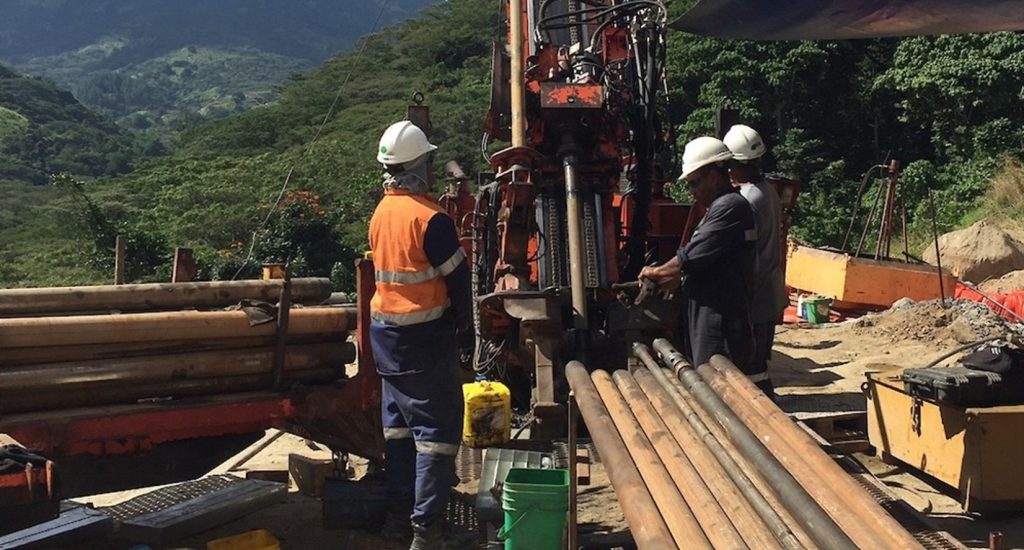Lion One Metals developing high-grade Roscoelite Zone at Tuvatu Gold Mine, Fiji

Lion One Metals Ltd. [TSXV: LIO; OTCQX: LOMLF] reported that the development of a new high-grade near-surface roscoelite zone has commenced at the 100%-owned Tuvatu high-grade alkaline gold mine on the island of Viti Levu, Fiji.
Walter Berukoff, CEO, stated, “Quartz-roscoelite veining is the most economically significant mineral assemblage at several world class alkaline gold deposits that are similar to Tuvatu. Roscoelite is a defining characteristic of these alkaline systems and it is directly associated with high-grade gold. An initial bulk sample of the near-surface roscoelite zone at Tuvatu has returned 11.6 g/t gold from 861 tonnes of material mined at full mining widths. We are now enhancing our mine plan with this gold-rich roscoelite material, which is already being processed through the pilot plant.”
Roscoelite veining is directly related to high-grade mineralization at the nearby Vatukoula gold mine in Fiji where over 7 million ounces of gold have been produced over the last 85 years. Roscoelite is also observed in association with gold mineralization at the Porgera gold mine in PNG, which has been a top 10 ranked gold mine globally and which has produced over 25 million ounces of gold.
At Porgera, the most economically significant veins are the Stage II quartz-roscoelite-pyrite veins with native gold, found in the Roamane fault zone. At Tuvatu the high-grade Stage II veins also ubiquitously occur with roscoelite – a rare dark green to black vanadium rich mica mineral. This same mineral assemblage is observed in the near-surface roscoelite zone at Tuvatu, which consists of a series of intersecting flat and sub-vertical banded veins composed primarily of low-temperature chalcedonic quartz intergrown with roscoelite, pyrite, lesser sphalerite and galena, and native gold.
This same mineral assemblage is also observed at the high-grade Zone 500 at 500m depth in Tuvatu, at the West Zone near-mine expansion target 300 m to the West of Tuvatu, as well as in drill core throughout the Tuvatu deposit.
The near-surface roscoelite zone at Tuvatu is located 65 metres below surface and consists of a series of flat-lying and vertical veins. The strongest gold mineralization occurs in blow-out zones at the intersection of these structures. The primary vertical structures in this zone consist of quartz vein arrays with roscoelite and minor base metal sulfides, while the primary flat-lying structures consist of low-temperature quartz-roscoelite-pyrite veins.
Both sets of veins contain high-grade gold. This is a very similar scenario to that observed at the Porgera gold mine, wherein there are high-grade ore shoots formed at the intersection of early Stage I base metal veins with later Stage II quartz-roscoelite-pyrite veins, with both sets of veins containing gold. In the near surface roscoelite zone at Tuvatu there is evidence of multiple stacked flat-lying quartz-roscoelite-pyrite veins, which would produce multiple stacked shoots of high-grade mineralization at the intersection of vertical structures below the current underground workings.
The Tuvatu project comprises the high-grade Tuvatu alkaline gold deposit, the underground gold mine, the pilot plant, and the assay lab. The company also has an extensive exploration license covering the entire Navilawa Caldera, which is host to multiple mineralized zones and highly prospective exploration targets.
